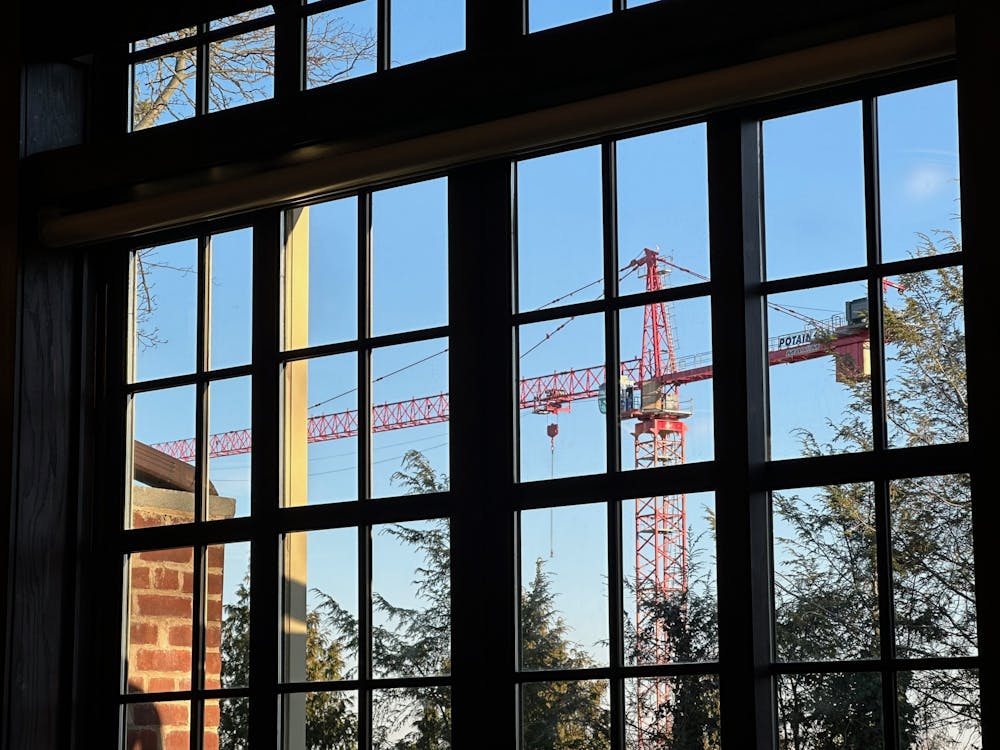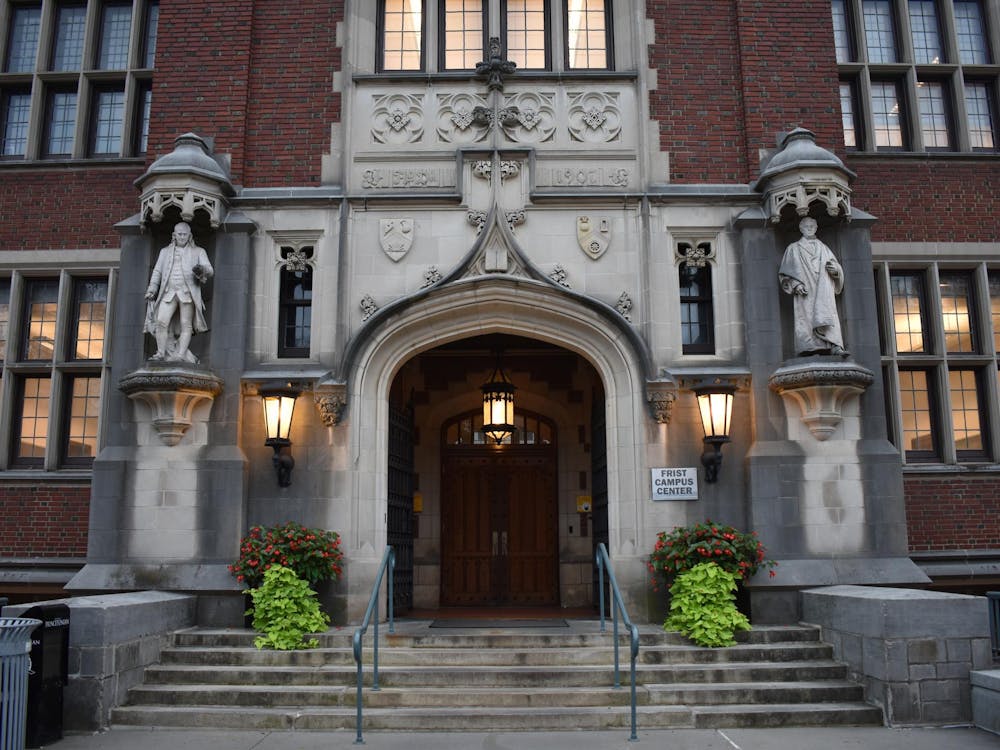The fall of my junior year, I sat in one of those dark wood-paneled East Pyne classrooms, learning about the transformation of France in the late 19th and early 20th centuries. For weeks on end, I heard the same French word I did not know over and over again. Slowly, from context and repetition, I pieced together some understanding of it.
I settled on this definition of the word: things disrupted, transformed, turned upside down. Change, but not of the gradual, evolutionary kind. No, it was always shocking, unsettling, revolutionary. The kind that struck deeply at the nerves of people. Every time I use the word now, I remember its meaning as a feeling, like my insides are ready to burst out — the personal discomfort of throwing up and the distanced gore of a chest peeled back for surgery or autopsy, all at once. But I didn’t learn the word in a French biology class; it was about society and culture. Daily life and the fabric of community were the body, ready to erupt, erupting, erupted.
Recently, this feeling has surfaced without the word ever gracing my lips. It could be mild acid reflux — the byproduct of the coffee and beer that fuel a senior spring. But I don’t think that’s it: I don’t feel it in me as I wake up the morning after. No, the feeling comes in waves as I walk around the campus or sit and try to think about anything besides my thesis. Call it the product of a senior year ennui, if you like.
Walk with me through Princeton, please.
Fall break is dominated by catching up on thesis work at Firestone Library, but for some reason, one crucial book is down-campus in the Engineering Library. It’s a rare walk so far down the hill, but after the book is successfully in tow, a first-time trip to the top of Fine Hall teases novelty and allure. For the first time, the whole of campus is something to look down at — grand arches, soaring towers, hallowed halls all rendered doll houses and Lincoln logs. And a turn to the northeast reveals a huge gash in the earth from Washington Road almost to FitzRandolph.
A daily pilgrimage to the eating clubs from up-campus sometimes converges on 1879 Arch, with its conquering overlook down an avenue of quaintly elite mansions. Now, in mid-February, this overlook is interrupted and cut short as one of these halls crosses the road — the once-long vista ends in a crawling brick wall. A closer inspection confirms its oddity: a great house defying its customary static nature.
A brisk Friday afternoon trek down a diagonal from one lot on Prospect Avenue to a Creative Writing course on New South’s sixth floor. Along the way, the solid ground falls out from underneath, sinking into cavernous ditches for new pipes — traversed only by a metal plate. It’s minutes before the class begins, and the sixth-floor view of the eastern end of Princeton reduces campus to the grooves and mounds, the plastic shovels and pails of a sandbox.
The walk back home after class requires another detour to the Engineering Library via Goheen Walk and then up Washington. Goheen remains an obstacle course, but the green sheets covering the fences to the path’s north have frayed enough to reveal the fresh plateaus of demolition where a whole college and its gentle slopes had sat before. A section of Washington appears the same but has actually had its foundation hollowed out to make way for more new pipes — the road now an overpass.
Everywhere one goes, everywhere one looks, there abound signs of something fraying, something so torn up and unsettled that it may erupt. It’s not just Princeton, but one’s very grasp of Princeton, that has been challenged, turned upside down: Princeton bouleversé.
Construction is messy, annoying, loud, and frustrating, but I don’t really care about all that anymore. Overall, those are temporary inconveniences, even if four short years of college obscure this fact. Instead, the perturbing aspect of construction arrives and acts in the overwhelming onslaught. It provokes an angst around losing grasp on one’s understanding of the world, or at this scale, on one’s life in this community. The stoic and historic reservoirs of meaning are superseded by an accelerating rate of change, seemingly only for change’s sake. The newly discovered vistas of the place reduce it from something vast and enduring to something fickle and fragile — maybe even inconsequential. Things that once seemed permanent are now torn up, moved around like toys in a sandbox. They confuse any sense of the material and garble any links between our past and future. All this creates that troubling feeling, waiting urgently to burst forth from within.
And yet, I resist any temptation or desire to freeze Princeton as I’ve known it. That wouldn’t resolve anything. I don’t even know the parameters of the problem to be solved here — save one exception. Transformation in the life of a community at this scale risks losing sight of the person — living and breathing, mind, body, and soul, if you accept those terms. In a sandbox world, in a sandbox campus, what are we but ants? Mindlessly crawling around, anonymous, with little purpose beyond seeking that next morsel of sugar. As humans, we can’t endure, much less enjoy, such an existence. This struck me most profoundly while reading the recent presidential “State of the University” letter. Paging through paragraph after paragraph about recent accomplishments, upcoming growth, and the like, I kept hoping for any address of the relentless cycle of student death and grief that has defined the state of the University’s past months and years. My hope, this time, was futile. Ants at the mercy of the kid playing in the sandbox.
One Tuesday afternoon, as I sat in the depths of Firestone in the Scribner Atrium, my noise-canceling headphones were overpowered by sheets of rain crashing upon the glass ceiling. Lights flickered, lightning bleached the room, and thunder resonated in my delicate books. Then, in a few minutes, the sun was streaming in, brighter than it had all day. In this near-summer state, only then did the Tornado Warning come and go, seemingly on delay. Outside, in the moments after the storm, it began to rain sideways. The sky released so much water the earth had yet to soak up; the wind picked it up, from the ground, from stone walls and slate roofs, until I was doused in both golden sunlight and sprays of rainwater.

Two nights later, a hike up from Whitman’s theater awaited me in the dark cold after a performance of “Little Women.” But when I stepped outside, as I shuddered from the cold, the darkness was missing. The misty fog of that night flowed between blue and white, diffusing into a sickly, verdant haze further and further away from its source of overpowered lights over construction.
Each walk has only added to the complexity of what has made the campus so unsettling this year; these latest two walks are no exception. The oddity of the storm and the almost paranormal character of that night sky were so distant from my idea of this place. The confusion, disorientation, eruption persisted. Still, I lacked any idea of what I wanted in its place.
Then came along a Friday morning spent discussing flowers and gardens in America during the late 19th and early 20th centuries. Artificial yet natural. Ornamental yet essential. Flowers and gardens, constantly balancing these tensions, are nevertheless sources of beauty, joy, hope, and so on — especially at first bloom, at the end of a long winter.
Perhaps this is what I desire: to no longer feel like ants in a campus sandbox, to not just see the sand swept away, but to see Princeton become a garden anew.
José Pablo Fernández García is a senior from Ohio and Head Editor Emeritus for The Prospect at the ‘Prince.’ He can be reached at jpgarcia@princeton.edu.
Self essays at The Prospect give our writers and guest contributors the opportunity to share their perspectives. This essay reflects the views and lived experiences of the author. If you would like to submit a Self essay, contact us at prospect@dailyprincetonian.com.








